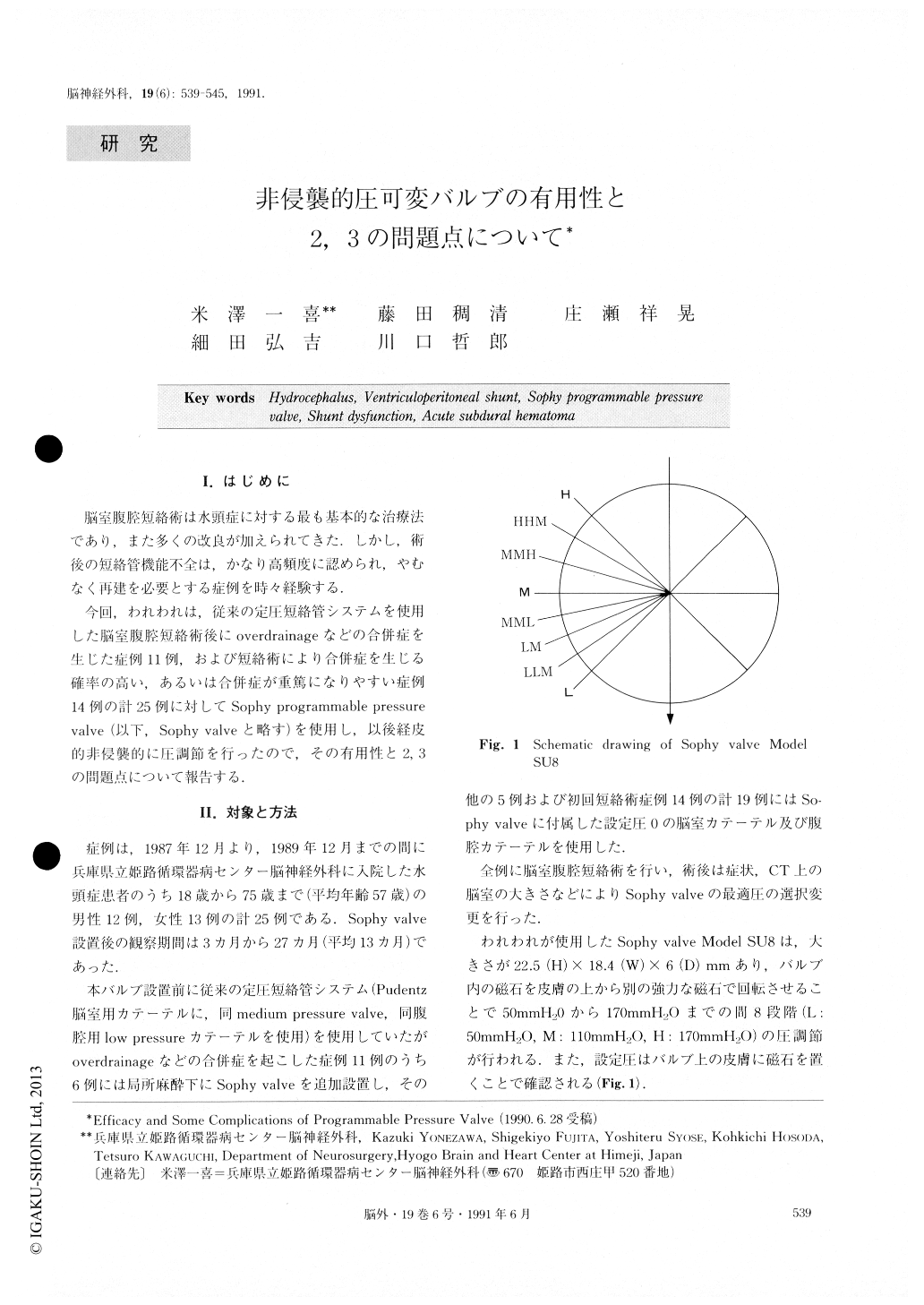Japanese
English
- 有料閲覧
- Abstract 文献概要
- 1ページ目 Look Inside
I.はじめに
脳室腹腔短絡術は水頭症に対する最も基本的な治療法であり,また多くの改良が加えられてきた.しかし,術後の短絡管機能不全は,かなり高頻度に認められ,やむなく再建を必要とする症例を時々経験する.
今回,われわれは,従来の定圧短絡管システムを使用した脳室腹腔短絡術後にoverdrainageなどの合併症を生じた症例11例,および短絡術により合併症を生じる確率の高い,あるいは合併症が重篤になりやすい症例14例の計25例に対してSophy programmable pressurevalve(以下,Sophy valveと略す)を使用し,以後経皮的非侵襲的に圧調節を行ったので,その有用性と2,3の問題点について報告する.
Abstract
Twenty-five patients with hydrocephalus were treat-ed using Sophy programmable pressure valve. The valve pressure is adjustable percutaneously with a mag-net. This valve was very useful for management cases presenting overdrainage and high-risk cases of shunt dysfunction such as aqueductal stenosis and idiopathic normal pressure hydrocephalus. It was also useful for hydrocephalus after subarachnoid hemorrhage because it was difficult to know the most adequate pressure he-fore the shunt operation.
Two patients developed acute subdural hematoma of arterial origin after the shunt operation. The causative factor appeared to be low intracranial pressure and rup-ture of small arterial branches. This complication may be more frequent in cases using this system than incases using other systems. We must pay attention to this complication and it is necessary to improve the shunt system. One bed-ridden patient developed necro-sis of the skin because of this valve, and it had to beremoved. We should place this valve so that it is at the anterior of the chest.

Copyright © 1991, Igaku-Shoin Ltd. All rights reserved.


